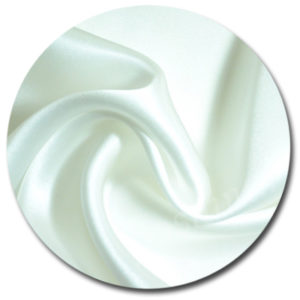 Silk is a plastic fabric made from fibers secreted by the silkworm during its life. The average thickness of the threads is 30-40 microns. According to its characteristics, it is most suitable for the human body due to its high anti-allergenic properties.
Silk is a plastic fabric made from fibers secreted by the silkworm during its life. The average thickness of the threads is 30-40 microns. According to its characteristics, it is most suitable for the human body due to its high anti-allergenic properties.
The first mention of silk was found in the records of Chinese chroniclers who lived 2.5-2 thousand years before the birth of Christ. This date is confirmed by the remains of silk material found during archaeological excavations. Not India, but China is the real birthplace of silk. Several dozen centuries would pass before the appearance of silk fabric in Europe and Central Asia.
According to legend, a silkworm cocoon accidentally fell into a mug of hot tea by one of the women during a tea party in the Imperial Palace. The overly squeamish lady grabbed the loose hair and tried to get out the already cooked cocoon. But under the influence of high temperature, the fiber became so strong that it easily unwound into a long strand. This is how the twisted silk thread was born. In fact, the history of its appearance is not known for certain.
More than 100 years ago, microbiologists and chemists created artificial silk, which led to the creation of many new types of silk fabric.
There are several dozen artificial silk fabrics of different types and types in the world. But only 2 varieties are made from natural mulberry fiber:
The most expensive, and therefore higher quality, is the Mulberry variety. It is obtained from silkworm fibers raised on special silk farms. Ideal conditions ultimately make it possible to weave fabric from thinner threads, and this has a positive effect on all parameters of silk fabric.
You can only work with such a thin thread by hand. The processing process should not be subjected to mechanical technologies and chemical reagents. For bleaching and further dyeing, weavers use natural dyes. The result is a shiny material that retains all the necessary properties.
The Tussa variety is obtained from wild caterpillars that reproduce independently in huge mulberry gardens. Natural conditions, of course, made their own adjustments to the properties of future matter, but did not in any way affect the basic characteristics. The natural color of the threads is usually red, but brown and copper are also found. It is bleached to make it more presentable. But most often they are used in their natural form for furniture production.
Silk is several types of materials unique in their properties. Each of them is classified according to the following properties:
All inherent properties of a material primarily depend on its composition. Natural silk is, first of all, 97% natural proteins and 3% wax with vegetable fats. It is the presence of natural wax with fats that gives silk an irresistible shine and a kind of springy flexibility. Artificially created silk material is ordinary cellulose, to which chemical reagents and impurities have been added to achieve certain qualities.
Surprisingly, but true: natural silk is not exposed to acids, alkalis, organic solvents and other aggressive environments.
But a significant disadvantage of silk fabric must be recognized as complete decomposition under prolonged exposure to sunlight and heating to temperatures above 110°C.
In its properties, silk is very different from other types of fabrics. It is pleasant to the touch, soft. Touching it with your hands, you immediately begin to feel the emanating heat. This fairly durable material lends itself easily to any coloring method. Its wear resistance allows it to easily absorb moisture and allow atmospheric air to pass through. This means that it can be quickly washed, dried and ironed. Its only drawback in use is the constant bruising, which housewives do not really like, but against the backdrop of the positive aspects, such a significant flaw becomes simply unnoticeable.